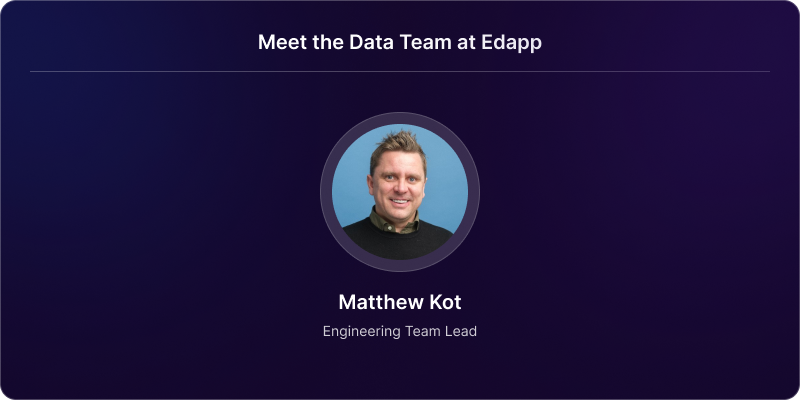About EdApp
EdApp is a mobile learning management system designed for today’s digital habits, delivering more engaging and effective micro-learning directly to learners anytime and anywhere.
 What do they do?
What do they do?
 Industry
Industry
 Location
Location
EdApp is a learning management system based in New South Wales, Australia. They offer a mobile platform where users can easily create personalized courses on any topic. They can also draw material for their courses from a pre-existing library of 1000+ courses and other learning materials provided by EdApp. Users include universities or schools creating self-paced and accessible courses for their students, enterprises that create training courses for their employees, and individuals who are trying to learn a wide range of skills. It is also associated with UNITAR, United Nations Institute for Training and Research, to provide free, high-quality, and impactful education worldwide.
A critical part of the value for the customers of EdApp is the ability to view key metrics about the courses they have created. For example, for organizations, it is essential to understand the progress, performance, engagement, etc., of the employees who are taking their onboarding courses. This helps them optimize the user experience and learning journey. Today, this information is accessed easily through very detailed in-app dashboards provided by EdApp; however, this was not always the case! Learn how EdApp went through a journey of maturing its data stack to provide the standards of in-app reporting for customers that it does today.
Starting the journey: elevating reporting for customers
When Matthew Kot, Engineering Lead, started working on the data stack at EdApp three years ago, he came across a number of gaps that he wished to plug in. The in-app reporting at this time was in a very rudimentary form, both with regard to freshness and the level of reports provided.

The team was using Stitch for their data ingestion and could not ingest a key chunk of the product data from MongoDB. They were only using limited product data from PostgreSQL to create these reports. This meant they could only provide a single, surface-level report to customers. They also experienced a latency of around an hour for ingestion, on top of which they had to model the data for reporting, leading to a very high delay in updating the report dashboards.
Since the reporting is all application layer data that is directly client-facing, Matthew felt that it was essential for it to be ingested, modeled, and reported much faster than it was at the time. It was at this point that Matthew decided to switch the ELT tool being used, and he began the hunt for an acceptable alternative.
Unlocking the doors for better reports
Out of all the platforms he evaluated, Matthew was highly impressed with the speed of ingestion and cost-effectiveness offered by Hevo Data. He can now ingest data into his warehouse in a matter of minutes, as opposed to the hour or more that it used to take previously. Considering how important near real-time ingestion is for EdApp, the case was already made, and the speedy support provided by Hevo was an extra positive that he experienced from the beginning.
Matthew was able to migrate all his pipelines from Stitch and add new MongoDB pipelines very quickly. In fact, the initial ingestion was done entirely on his own, which was even more tricky since it was in a production environment. Yet, the switch was done seamlessly without any impact on production.

With a team so small, without Hevo, it wouldn’t have been possible to do what we’ve done. If we had had to create pipelines ourselves, we’d probably still be working on ingesting data into Snowflake today. It has enabled us to build everything that we have.
After EdApp was acquired by Safety Culture, the team also set up DynamoDB pipelines to effortlessly ingest a large volume of customer data from Safety Culture. The introduction of dbt into their data stack has simplified the testing process through its modular functions and allowed for an increased level of trust in the data.

Matthew estimates that the team would have to be at least 3x bigger to achieve the same outcomes without Hevo Data as a part of their data stack. In this way, they’ve seen huge savings on the engineering resources utilized for data pipelines by automating this entire process, and this has given them the bandwidth to focus on higher-level tasks.
A new level of data maturity

These reports are an integral part of the platform, and we would have had many customers churn if we hadn’t been able to provide that kind of granular reporting. The impact would have been huge.
Ingestion of data from MongoDB means that the team is also able to create a number of internal reports on customer behavior, usage of the platform, and other metrics that allow them to constantly understand and improve the customer experience.
EdApp and its data team are always looking for ways to improve their outcomes and the customer experience, and Hevo Data has been a critical part of enabling that.
Excited to see Hevo in action and understand how a modern data stack can help your business grow? Sign up for our 14-day free trial or register for a personalized demo with our product expert.









